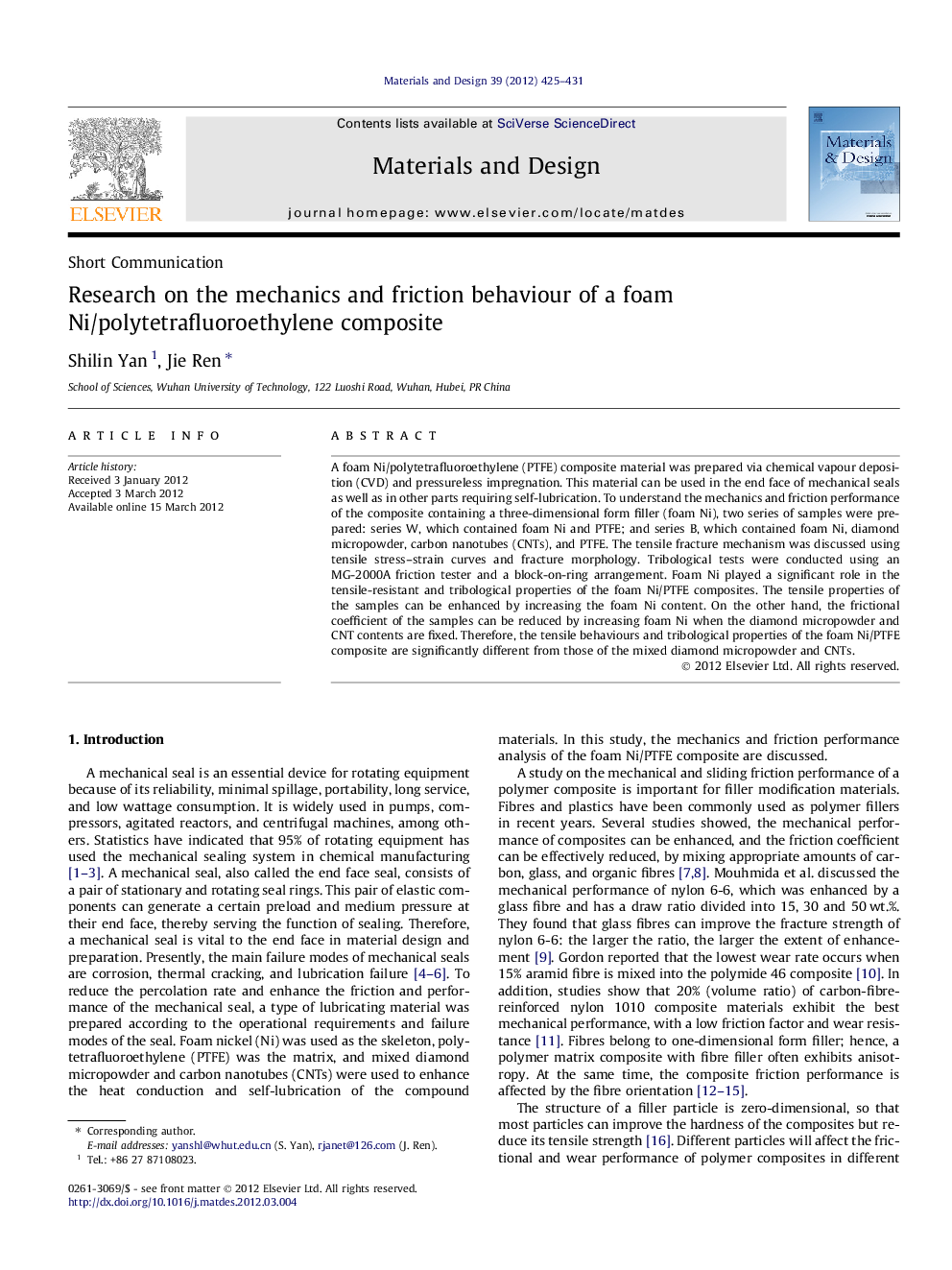| Article ID | Journal | Published Year | Pages | File Type |
|---|---|---|---|---|
| 830694 | Materials & Design (1980-2015) | 2012 | 7 Pages |
A foam Ni/polytetrafluoroethylene (PTFE) composite material was prepared via chemical vapour deposition (CVD) and pressureless impregnation. This material can be used in the end face of mechanical seals as well as in other parts requiring self-lubrication. To understand the mechanics and friction performance of the composite containing a three-dimensional form filler (foam Ni), two series of samples were prepared: series W, which contained foam Ni and PTFE; and series B, which contained foam Ni, diamond micropowder, carbon nanotubes (CNTs), and PTFE. The tensile fracture mechanism was discussed using tensile stress–strain curves and fracture morphology. Tribological tests were conducted using an MG-2000A friction tester and a block-on-ring arrangement. Foam Ni played a significant role in the tensile-resistant and tribological properties of the foam Ni/PTFE composites. The tensile properties of the samples can be enhanced by increasing the foam Ni content. On the other hand, the frictional coefficient of the samples can be reduced by increasing foam Ni when the diamond micropowder and CNT contents are fixed. Therefore, the tensile behaviours and tribological properties of the foam Ni/PTFE composite are significantly different from those of the mixed diamond micropowder and CNTs.
► We prepared a kind of composite material which co-enhanced by mesh metal and diamond micropowder. ► CNTs were deposited on this mesh metal-foam Ni. ► The content of foam Ni is higher, its tensile property is better. ► The influence of breaking elongation decided on the content rate between diamond micropowder and foam Ni. ► The frictional coefficient could be reduced along with the increase of the content of CNTs deposited foam Ni.
